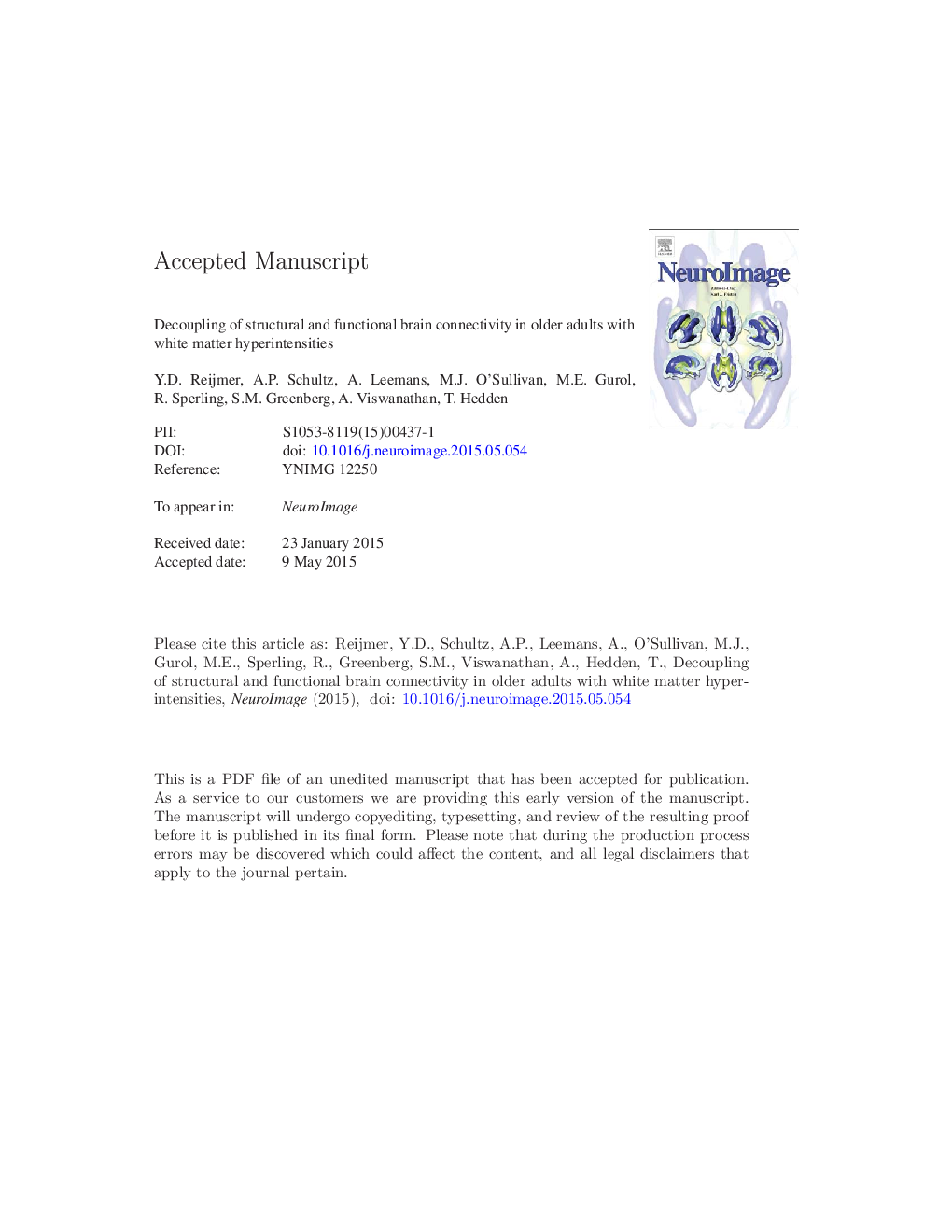| Article ID | Journal | Published Year | Pages | File Type |
|---|---|---|---|---|
| 6025026 | NeuroImage | 2015 | 30 Pages |
Abstract
Age-related impairments in the default network (DN) have been related to disruptions in connecting white matter tracts. We hypothesized that the local correlation between DN structural and functional connectivity is negatively affected in the presence of global white matter injury. In 125 clinically normal older adults, we tested whether the relationship between structural connectivity (via diffusion imaging tractography) and functional connectivity (via resting-state functional MRI) of the posterior cingulate cortex (PCC) and medial prefrontal frontal cortex (MPFC) of the DN was altered in the presence of white matter hyperintensities (WMH). A significant correlation was observed between microstructural properties of the cingulum bundle and MPFC-PCC functional connectivity in individuals with low WMH load, but not with high WMH load. No correlation was observed between PCC-MPFC functional connectivity and microstructure of the inferior longitudinal fasciculus, a tract not passing through the PCC or MPFC. Decoupling of connectivity, measured as the absolute difference between structural and functional connectivity, in the high WMH group was related to poorer executive functioning and memory performance. These results suggest that such decoupling may reflect reorganization of functional networks in response to global white matter pathology and may provide an early marker of clinically relevant network alterations.
Keywords
Related Topics
Life Sciences
Neuroscience
Cognitive Neuroscience
Authors
Y.D. Reijmer, A.P. Schultz, A. Leemans, M.J. O'Sullivan, M.E. Gurol, R. Sperling, S.M. Greenberg, A. Viswanathan, T. Hedden,
